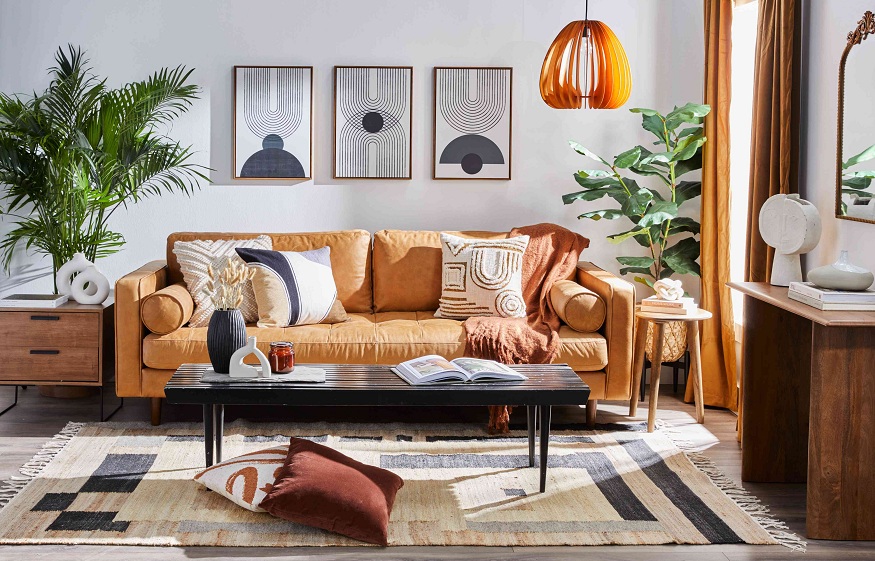Transitional Living Room Design Ideas To Add A Dramatic Visual
Whether you’re a fan of classic or modern house design, transitional style offers the best of both worlds. This popular trend allows you to create a living room design that is both stylish and comfortable, with a perfect mix of traditional and contemporary elements. Whether you want to create a cosy space for family gatherings or a sophisticated setting for entertaining guests, transitional design can help you achieve the look and feel you desire.
From selecting the right colours and fabrics to choosing the perfect furniture and accessories, there are countless ways to create a stunning transitional living room interior design. However, achieving the perfect balance between old and new, warm and cool, classic and modern, can be challenging. That’s why we’ve created this comprehensive guide to transitional living room design ideas, filled with expert tips and inspiration to help you create the perfect space for your home.
- Bold Accents: Adding bold accents is a great way to infuse some personality into your neutral transitional living room design. Consider incorporating bright throw pillows, a colourful rug, or a statement piece of artwork to create a visually striking space. These bold accents will create a sense of energy and interest in the room, while still maintaining the overall sophisticated and timeless look of transitional design. A large statement mirror can also serve as a great focal point while adding depth and light to the space.
- Start with a neutral colour palette: Transitional living rooms typically feature a neutral colour scheme as the foundation. Consider starting with a base of warm beige or grey on the walls and layering in shades of cream, ivory, and taupe for your furniture, rugs, and accessories. Add pops of colour with accent pillows, throws, or artwork for visual interest. Keep in mind that neutral colours don’t have to be boring – experiment with different textures and patterns to create depth and dimension.
- Choose streamlined furniture: In a transitional living room interior design, furniture should be clean-lined and classic in design, but not overly ornate or fussy. Look for pieces with simple silhouettes and elegant details, such as rolled arms or turned legs. Avoid furniture with too many embellishments, such as fringe or tassels, as this can make the space feel more traditional than transitional. Upholstery should be in neutral fabrics or leather, with a mix of textures for added interest.
- Incorporate natural materials: Natural materials like wood, stone, and woven textiles can add warmth and texture to a transitional living room. Look for furniture pieces made of natural materials, such as a wooden coffee table or a stone fireplace surround. Woven textiles, such as a jute rug or linen curtains, can add depth and texture to the space. Consider adding greenery or fresh flowers to bring in some organic elements and add a touch of colour.
- Mix classic and modern elements: The key to a successful transitional living room is finding the right balance between classic and modern elements. This can be achieved through a mix of furniture styles, such as a traditional sofa paired with a modern accent chair. You can also mix materials, such as pairing a leather sofa with a glass coffee table. Use accessories to add modern touches, such as a sleek floor lamp or abstract artwork.
- Layer in textiles: Textiles are an important element in any living room design, but they are especially important in a transitional space. Look for cosy throw blankets, plush area rugs, and soft accent pillows to create a comfortable and inviting atmosphere. Don’t be afraid to mix and match different textures and patterns, such as a velvet sofa paired with a geometric rug and a floral accent pillow.
- Add subtle lighting: Lighting can make a big difference in the overall feel of a room. In a transitional living room, aim for a mix of overhead and accent lighting to create a warm and inviting atmosphere. Use table lamps, floor lamps, and sconces to add layers of light and create a cosy ambiance. Choose fixtures with simple lines and classic designs to keep the look cohesive.
- Create a focal point: Every living room needs a focal point, and in a transitional space, this can be a fireplace, a piece of artwork, or even a statement piece of furniture. Use your focal point as a starting point for the rest of the room’s design. Arrange furniture around the focal point to create a comfortable and inviting seating area.
These are just a few ideas to get you started on creating a beautiful transitional living room design. Remember, the key is to find the right balance between classic and modern elements, layer in plenty of texture and pattern, and create a warm and inviting atmosphere in your house design that feels comfortable.


